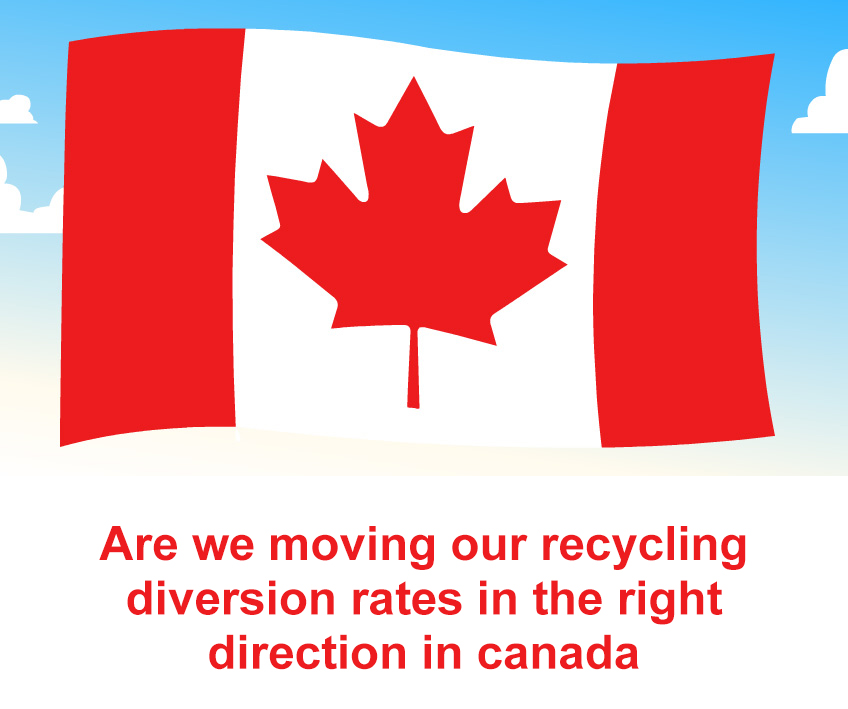Are we Moving our Recycling Diversion Rates in the Right Direction in Canada – read here!

According to a 2018 report, Canada has a lot to work on when it comes to its rate of waste per person. Compared to other high-income countries, Canada ranks as one of the worst waste producers, analyzed on a per-person basis.
The average Canadian produces up to 2.2 kg of waste per person every single day. If this report is to be believed, Canada has a worse rank than Kuwait, Switzerland, Israel, Germany, the Netherlands, Saudi Arabia, Sweden, South Korea, and Japan.
How does a rate like this affect waste diversion – well, it goes to show that Canada might be capable of more. Every year, recycling rates in North America are published. Slowly, Canada and the United States both have been gradually reducing their diversion rates. The annual waste diversion rate has fallen every year for the past five years across the continent.
Fortunately, in the United States, the Environmental Protection Agency (EPA) publishes a report every year detailing waste diversion. In Canada, there is no such equivalent – something which represents just how important we view our commitment to improving recycling rates. Although nationally there is no organization overseeing waste diversion rates, municipal, regional, and provincial stakeholders occasionally publish reports sharing recycling information.
Are we moving in the right direction – yes. Could we be doing more to move in said direction – yes, absolutely. The diversion rate in Canada should be something stipulated for national monitoring.
It’s worth keeping in mind what the diversion rate does not include, which evidently is quite a bit. Canada’s waste diversion rate does not include unmonitored initiatives such as donations to second-hand stores and thrift stores, home or backyard composting efforts, and some community-based initiatives which are making a difference in reducing waste sent to our landfills. Therefore, let’s say one were to include these efforts in producing an exact waste diversion percentage, then they would have an even higher number to show.
Nevertheless, there’s a lot more work to do in improving Canada’s waste diversion. There’s a tremendous amount of positive movement happening on the subject of recycling. Among the most promising developments is the manufacturing industry changing the way it does its packaging. Lighter, biodegradable, and intelligently designed, as we change the waste we produce, that improves the amount of it which can be diverted.
In November, earlier this year, the federal government set a public goal of cutting Canadian waste by 50 percent by 2040. As to whether this becomes reality is up for debate however we certainly support any effort made to improve recycling rates, diversion rates, and to make Canada a more environmentally-friendly place for us all. The first step towards cutting waste by fifty percent will be to cut it down by 30 percent, which is the aim for 2030.
As a waste management company ourselves, we hope to see a lot of work put into reducing waste in the immediate future. So if you are a small business, corporation, construction company, contractor, condo corporation, or residential homeowner, know we’re a company you can trust to handle all your waste management, recycling, and dumpster rental and pick-ups. Meet Toronto’s top waste management company in Core Mini Bins!


